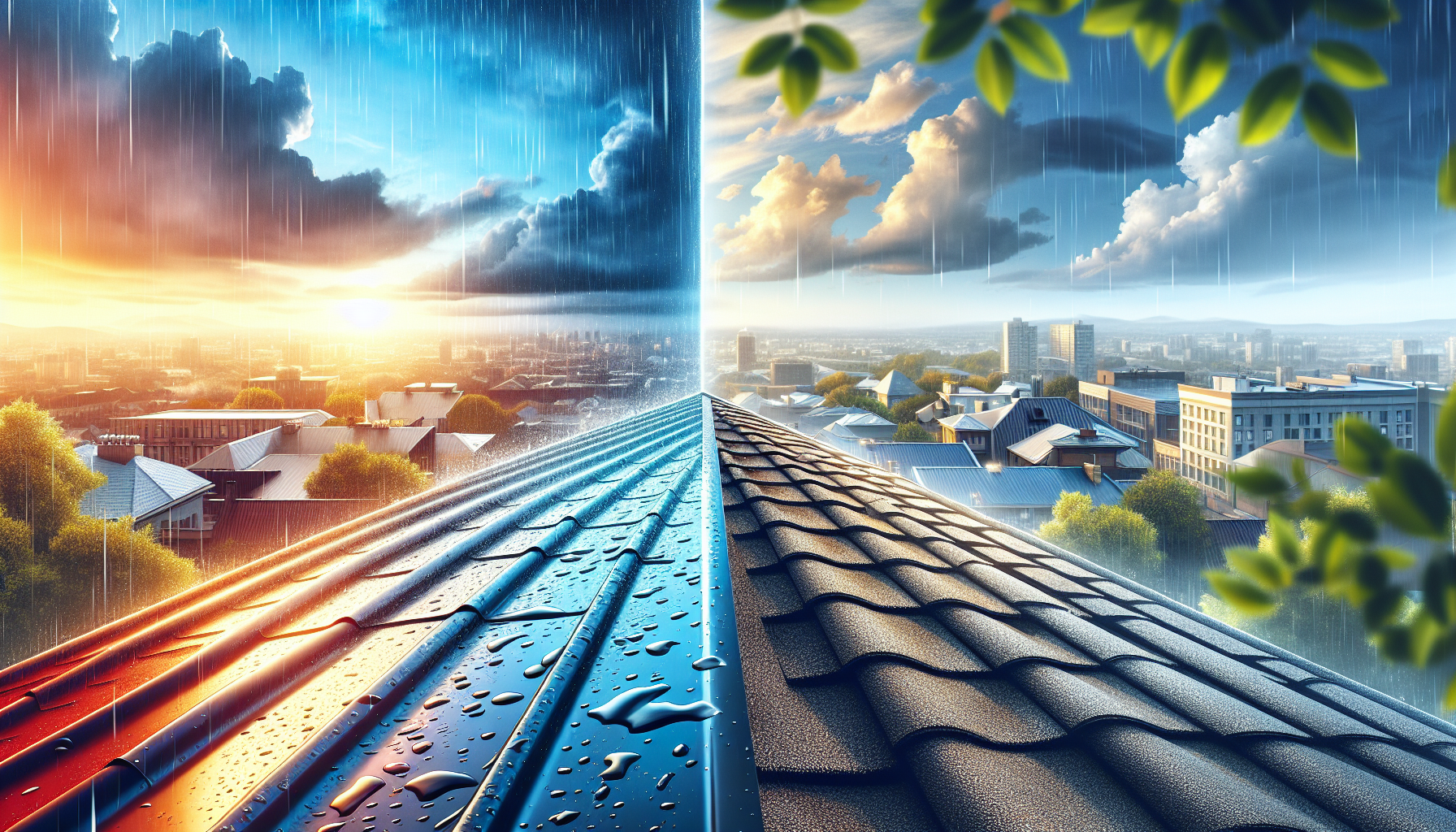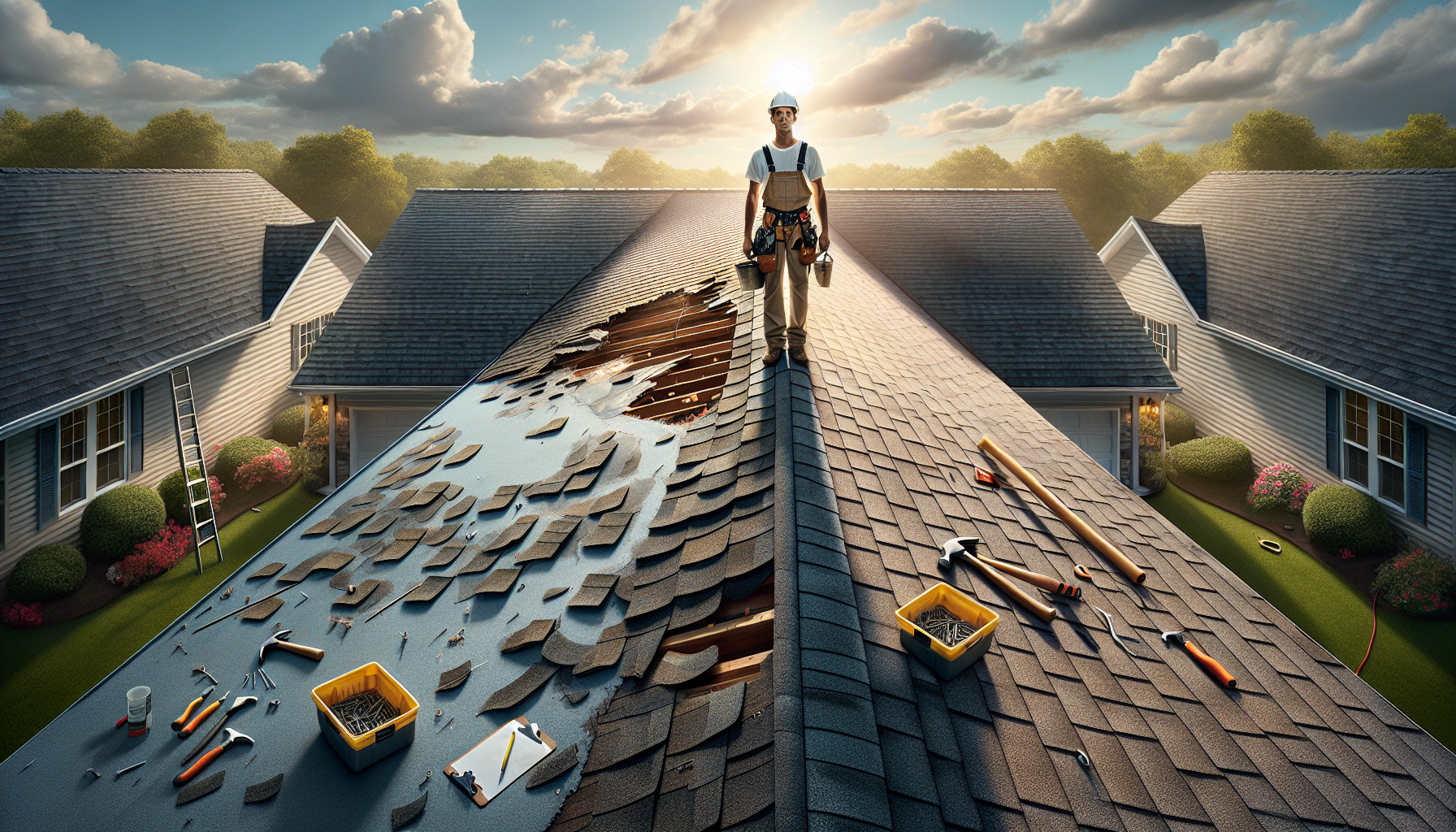Metal roofs have gained significant popularity in recent years, offering homeowners a durable and long-lasting alternative to traditional roofing materials. As more people consider metal roofing for their homes, it’s crucial to understand both the advantages and drawbacks of this roofing option. Metal roofs have an impact on various aspects of a home, including its appearance, energy efficiency, and overall value.
This article aims to explore the pros and cons of metal roofs to help homeowners make informed decisions. We’ll look into the durability and lifespan of metal roofing, examine cost considerations, and discuss its environmental impact. Additionally, we’ll cover the range of esthetic options available with metal roofs. By weighing these factors, readers will gain a comprehensive understanding of whether a metal roof is the right choice for their homes, while keeping in mind that traditional shingles remain a common and viable option for many homeowners.
Durability and Longevity
Lifespan of Metal Roofs
Metal roofs have gained popularity due to their exceptional longevity. These roofing systems typically last between 40 to 70 years, which is significantly longer than traditional asphalt shingle roofs . In fact, most manufacturers are so confident in the durability of metal roofs that they offer warranties valid for up to 50 years . This extended lifespan makes metal roofs an attractive option for homeowners looking for a long-term roofing solution.
Weather Resistance
One of the key advantages of metal roofs is their ability to withstand extreme weather conditions. They can endure high winds, with some impact-resistant metal roofing systems capable of withstanding winds up to 140 miles per hour . This makes them an excellent choice for areas prone to hurricanes and tornadoes. Metal roofs also perform well in heavy rainfall, as water runs off more easily compared to other roofing materials, reducing the risk of leaks and long-term water damage .
Comparison to Traditional Roofing
While metal roofs offer impressive durability, it’s important to note that traditional shingles remain a common and viable option for many homeowners, especially in Ohio. Asphalt shingles typically come with a 15-30 year warranty and are most vulnerable to humidity and moisture . However, they are generally less expensive upfront and can still provide adequate protection for many homes.
Metal roofs do have some vulnerabilities. They can be susceptible to denting from heavy hail or fallen tree branches, which may require partial roof replacement in extreme cases . On the other hand, asphalt shingles may experience cracking in climates with drastically different day and night temperatures, which can shorten their lifespan .
Regardless of the material chosen, regular roof inspections are recommended at least once per year to check for any debris or damage that could cause leaks . This maintenance practice can help extend the life of both metal and traditional roofing systems.
Cost Considerations
Initial Investment
Metal roofs typically come with a higher upfront cost compared to traditional roofing materials like asphalt shingles. The price range for metal roofs generally falls between USD 7,081 and USD 110,150, with an average cost of around USD 11,000 . This higher initial investment is due to the more expensive materials and higher labor rates associated with metal roof installation .
The cost of a metal roof depends on various factors, including the type of metal used. Aluminum roofs, which are the most common and affordable option, offer energy efficiency and a lifespan of about 45 years . On the other hand, copper roofs, while the most expensive, can last over 100 years with relatively easy maintenance .
Long-term Savings
Despite the higher initial cost, metal roofs can provide significant long-term savings. Their durability and longevity mean homeowners may spend less on maintenance and replacement over time. While asphalt shingles typically need replacement after 15-30 years, metal roofs can last 40-70 years, with some high-end options lasting up to 100 years in ideal conditions .
Energy Efficiency
Metal roofs have a substantial impact on energy efficiency, potentially saving homeowners up to 40% in energy costs 4. This is due to their ability to reflect solar energy and efficiently radiate absorbed heat away from the building 4. Cool-metal roofing systems, which are often ENERGY STAR certified, can re-emit up to 90% of absorbed solar radiation 4.
The Federal Energy Management Program estimates that an ENERGY STAR-qualified cool roof can save as much as USD 1.11 per square foot in ideal conditions . Overall, most sources suggest that investing in a metal roof can lead to energy cost savings of 25% to 40% .
Environmental Impact
Recyclability
Metal roofs have a significant positive impact on the environment due to their recyclability. These roofs are 100% recyclable, meaning that old or damaged panels, tear-off material, and leftover scraps can be appropriately recycled and used in future metal products . This high recyclability applies to the five most common metal roofing material types: Galvalume®, galvanized, aluminum, copper, zinc, and stainless steel .
Many metal coils and sheets used to fabricate metal roofing panels may already contain previously recycled metals. Using recycled materials significantly reduces the amount of energy and resources required to produce new coils or sheets. For instance, recycled steel uses only 26% of the original energy, while recycled aluminum uses just 5% .
Energy Efficiency
Metal roofs have a substantial impact on energy efficiency. They are excellent at reflecting solar heat, resulting in cooler interiors during summer months. This leads to reduced air conditioning use and potential energy bill savings of 10-25% annually, varying with local climate and energy prices .
Some metal surfaces incorporate cool technology, improving their capacity to release absorbed solar heat. This advancement further lowers indoor temperatures and cuts down on energy use, leading to more savings . In fact, metal roofs can save homeowners up to 40% in energy costs .
Sustainability
Metal roofing stands out in modern construction for its environmental sustainability. New panels often include up to 40% recycled steel and, after their lengthy service, can be fully recycled into new products . This cycle virtually eliminates their landfill impact, contributing to a more sustainable building industry .
The building and construction sector is responsible for 30% of total global final energy consumption and 27% of total energy sector greenhouse gas emissions . By choosing metal roofing, architects and building professionals are prioritizing more sustainable building envelope practices. Metal roofs are durable and last about three times longer than other roofs, reducing waste and lowering the energy needed for frequent replacements .
Esthetic Options
Variety of Styles
Metal roofing offers a wide range of styles to suit different architectural designs and personal preferences. Standing seam metal roofs, with their clean lines and contemporary look, are among the most popular choices . These roofs feature interlocking panels that allow for expansion and contraction, making them both functional and visually appealing. For those seeking a more traditional appearance, metal shingles can mimic the look of wood shakes or clay tiles without the added weight and maintenance . Stone-coated metal roofing combines durability with the esthetic appeal of traditional materials, offering a Class A fire rating and wind resistance up to 120 miles per hour .
Color Choices
The color spectrum available for metal roofs is impressive, ranging from timeless neutrals to bold and vibrant shades . Homeowners can choose from classic options like white, gray, and black for a sophisticated look, or opt for earthy tones such as brown, beige, or tan to create a warm, inviting feel . For those looking to make a statement, vibrant colors like red, blue, or green are also available . Some metal roofs even come with reflective finishes, enhancing energy efficiency while minimizing heat absorption .
Curb Appeal
A well-chosen metal roof can significantly enhance a home’s curb appeal. As the roof can make up to 40% of a home’s visible exterior, it plays a dominant role in its architectural character . The color and texture of a metal roof can influence how it harmonizes with other exterior elements, such as siding, doors, and landscaping . Darker colors tend to absorb heat and may be suitable for colder climates, while lighter colors reflect the sun’s rays, making them preferable in warmer regions . By carefully selecting the right metal roofing style and color, homeowners can dramatically alter their home’s appearance and potentially increase its market value .
Conclusion
Metal roofs offer a compelling blend of durability, energy efficiency, and esthetic appeal. Their long lifespan and ability to withstand harsh weather conditions make them an attractive option for homeowners seeking a long-term roofing solution. While the initial investment might be higher, the potential for energy savings and reduced maintenance costs over time can offset this expense. It’s worth noting that traditional shingles remain the most common roofing choice in Ohio, offering a reliable and cost-effective option for many homeowners.
The environmental benefits of metal roofs, including their recyclability and energy-saving properties, align with the growing focus on sustainable building practices. With a wide range of styles and colors available, metal roofs can enhance a home’s curb appeal while providing long-lasting protection. To consider your options and learn more about the pros and cons of metal roofing, reach out to Roof Revivers for a free consultation. Ultimately, the choice between metal roofing and traditional shingles depends on individual preferences, budget considerations, and specific home requirements.
FAQs
What are the common issues associated with metal roofs?
Metal roofs can expand and contract due to temperature changes, which may lead to leaks, loosening of fasteners, and warping of the panels. It’s essential to use proper installation techniques, including expansion joints and specially designed fasteners, to mitigate these issues.
What are some drawbacks of installing a metal roof?
The main disadvantages of metal roofs include their high initial cost, potential noise during rain or storms, susceptibility to denting and damage, issues with expansion and contraction, challenges in color matching, risks of rust and corrosion, complex installation requirements, and the phenomenon of oil canning (visible waviness in the flat areas of metal roofing).
In what situations is a metal roof not recommended?
Metal roofs are not ideal for coastal areas where salt can accelerate rusting. Additionally, they may not be suitable for those who prefer not to hear noise from rain hitting the metal surface, as they can amplify the sound during heavy storms.
Does installing a metal roof decrease the value of a home?
While a metal roof can increase the resale value of a home, it generally offers a lower return on investment compared to asphalt shingles. Although metal roofs have a higher resale value, their return on investment is not as high as that of asphalt shingles.
References
[1] – https://www.architecturaldigest.com/reviews/roofing/pros-and-cons-of-metal-roof
[2] – https://www.thisoldhouse.com/roofing/reviews/pros-and-cons-of-metal-roof
[3] – https://www.architecturaldigest.com/reviews/roofing/metal-roofing-cost
[4] – https://www.metalroofing.com/residential-metal-roofing/benefits/energy-savings/



